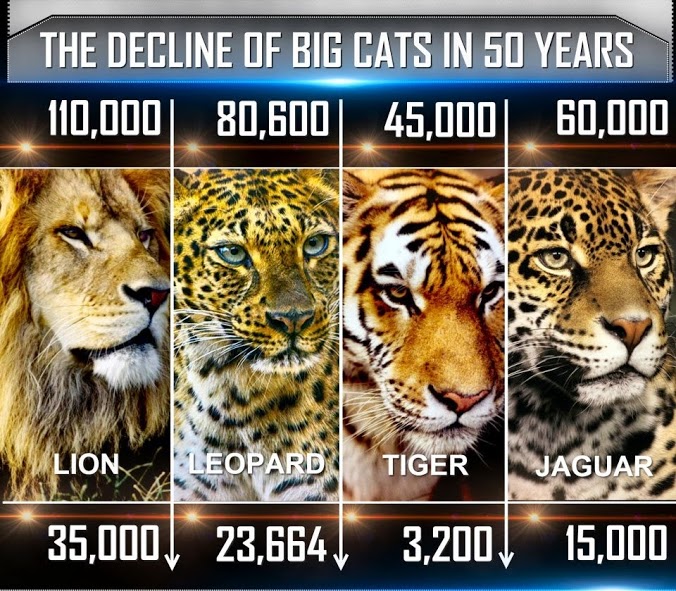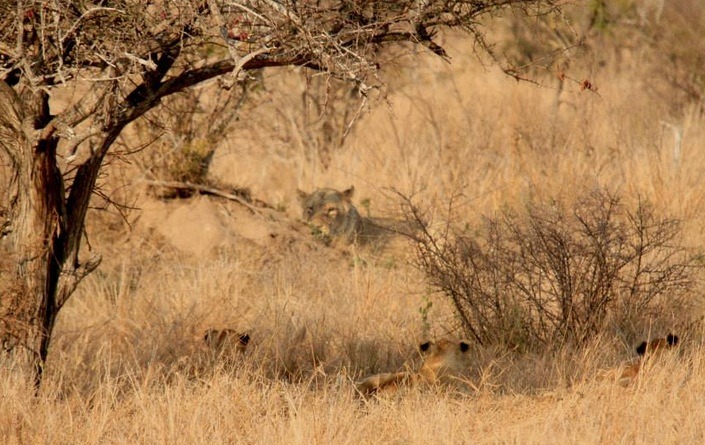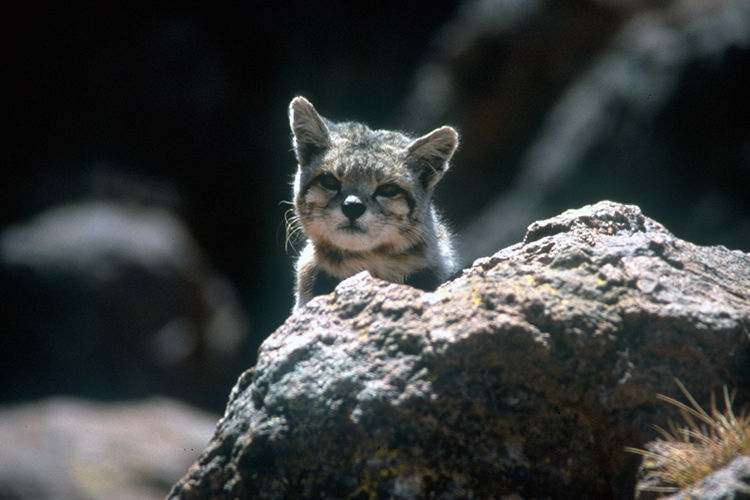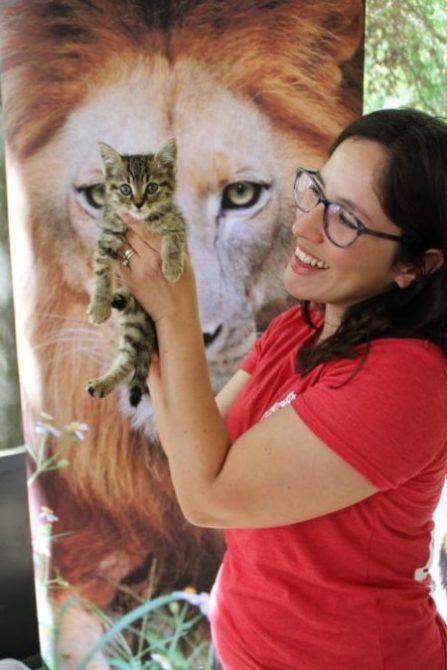Lion Population Drops by Two Thirds in 50 Years

Africa’s lion population plummets by two thirds in 50 years
 Nickson Parmisa / Wildlife Direct
Nickson Parmisa / Wildlife Direct
This lioness was killed on June 20, 2012, along with her sister and four cubs in Sholinge, Kenya, just outside Nairobi National Park. The lionesses had gone into a cattle area to teach the cubs to hunt.
Africa’s lions are running out of habitat and some populations, especially those in West Africa, are running toward extinction, according to a study published Tuesday.
Using new satellite data, a research team at Duke University found that about 75 percent of Africa’s savannahs were fragmented by farmers and other development in the last 50 years.
“Only 25 percent remains of an ecosystem that once was a third larger than the continental United States,” co-author Stuart Pimm, a Duke conservation ecology professor, said in a statement issued with the study.
“The situation in West Africa is particularly dire,” the experts wrote, noting that human populations have doubled there over the last three decades. Fewer than 500 lions remain in West Africa, the study estimated.
The team and a panel of lion experts used the savannah data to refine estimates of lion populations, which had ranged between 20,000 and 40,000 across Africa. Their estimate: 32,000 lions remain, down from an estimated 100,000 in 1960.
“Given that many now live in small, isolated populations, this trend will continue,” the experts wrote in the study published in the peer-reviewed journal Biodiversity and Conservation.
“Lions are not going to go extinct, but they are indeed going extinct locally,” Pimm told NBC News. “Those in West Africa are in particularly bad shape. It would be tragic if one could see lions only in a couple of places in Africa.”
The study estimates that more than 6,000 lions are in populations that have “a very high risk of local extinction.”
Only nine African countries have at least 1,000 lions, and five have likely lost all their lions since a 2002 study, the experts said. The biggest stronghold is in Tanzania, which has more than 40 percent of all African lions as well as a strong conservation program.
National Geographic, which funded the study, hopes to use the results to plan where to focus on saving lions.
“The research will help us better identify areas in which we can make a difference,” said study co-author Luke Dollar, a former graduate student of Pimm’s and now the grants director at National Geographic’s Big Cats Initiative.
The study estimated that some 24,000 lions are in “strongholds” — particularly within national parks, where ecotourism can protect the animals while creating local jobs.
But even that designation isn’t a guarantee, noted Pimm. “Some large parks in West Africa have lost all their lions and essentially all of their wildlife,” he said. “There has to be a political commitment to protect wildlife and, of course, a recognition that viewing wildlife can bring in substantial revenues.”
 Stuart Pimm
Stuart Pimm
This high fence was built to protect cattle from lions.
A secondary problem is that “lions go beyond the national parks, straying onto land where people live,” Pimm said. “The difficulty is to prevent the conflicts that occur when lions take livestock, typically at night.”
The Duke team also works with National Geographic and others to mitigate those conflicts — one approach is to build higher livestock fences. The goal, Pimm said, is to “protect livestock from lions and so stop the need for people to retaliate.”
The study follows a move last week by the U.S. Fish and Wildlife Service to study whether to list African lions under the Endangered Species Act. The biggest impact of a listing would be to bar U.S. hunters from bringing back any lion trophies from Africa, where some countries with healthy populations allow legal hunts.
The Associated Press contributed to this report.
https://worldnews.nbcnews.com/_news/2012/12/04/15671643-africas-lion-population-plummets-by-two-thirds-in-50-years-study-finds?lite
Study: Lion ranges, populations dropping in Africa
JON GAMBRELL , The Associated Press
POSTED: Tuesday, December 4, 2012, 7:17 AM
JOHANNESBURG – The lions that roam Africa’s savannahs have lost as much as 75 percent of their habitat in the last 50 years as humans overtake their land and the lion population dwindles, said a study released Tuesday.
Researchers at Duke University, including prominent conservationist Stuart Pimm, warn that the number of lions across the continent have dropped to as few as 32,000, with populations in West Africa under incredible pressure.
“Lion numbers have declined precipitously in the last century,” the study, published Tuesday by the journal Biodiversity and Conservation, reads. “Given that many now live in small, isolated populations, this trend will continue. The situation in West Africa is particularly dire, with no large population remaining and lions now absent from many of the region’s national parks.”
Fifty years ago, nearly 100,000 lions roamed across the African continent. In recent years, however, an ever-growing human population has come into the savannah lands to settle and develop. That has both cut down the amount of land lions have to roam, as well as fragmented it, researchers said.
Using satellite imagery, the researchers determined the amount of land now available for lions that remains wild and minimally impacted by human growth. Those lands are rapidly diminishing, and more territory will likely be lost in the next 40 years, the report said.
Five countries in Africa have likely lost their lions since a 2002 study was run, the report said. Only nine countries contain at least 1,000 lions, while Tanzania alone has more than 40 percent of the continent’s lions, it said.
“An obvious caveat is that areas for which we detect little conversion of savannahs to croplands may still suffer human impacts that make them unsuitable for lions,” the report said. “Over-hunting for trophies, poaching , of lions and of their prey species , and conflict with pastoralists may not have any visual signal to satellites. Even where there are low human population densities and areas designated as national parks, there (may) not be lions within them.”
The report calls for more mapping and studying to be done to ensure the lions’ protection.
https://www.philly.com/philly/news/nation_world/20121204_ap_studylionrangespopulationsdroppinginafrica.html





